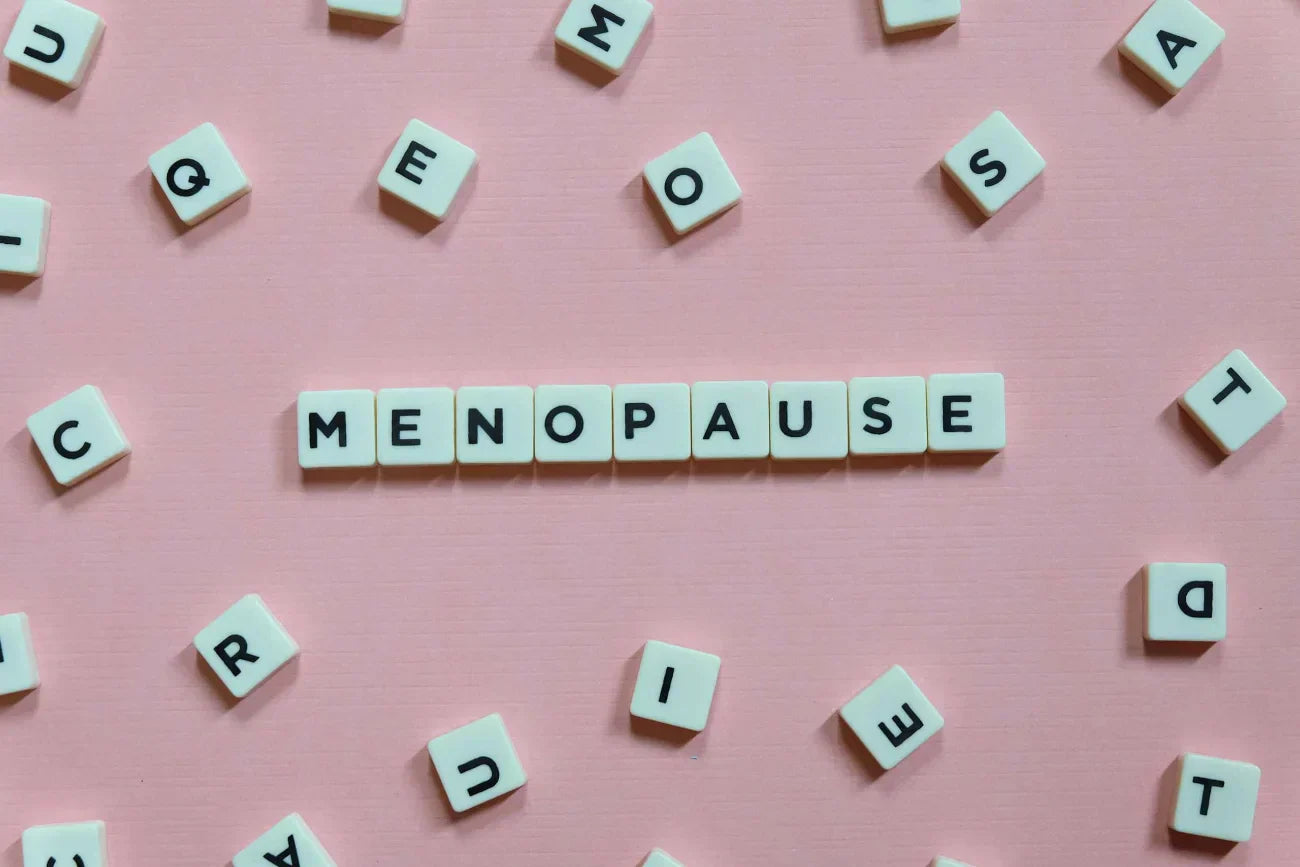What is perimenopause? It is a stage that is not widely discussed, although it is a time in a series of changes that will determine your quality of life in the years that follow. If you are interested in knowing how to be prepared and how to cope with these changes, you are in the right place.
What is perimenopause?

The word means "around menopause". It is precisely the time during which your body transitions to menopause, marking the end of your reproductive years (1).
The onset of this stage is different for each woman. We can even say that it is unpredictable, as it can occur between 2 and 10 years before the last menstrual period. Thus, some women may begin to show symptoms around the age of 40, while others will begin to show symptoms at the age of 30 (which may be a warning sign of early menopause) or later, such as in their mid-50s.
Once 12 months have passed without a menstrual period, menopause is considered to have begun and the perimenopause stage is over (1,2,3). These changes occur due to a gradual decrease in the function of the ovaries, so that ovulation and menstruation become irregular until they finally cease (1). Now, let's continue learning more about what is perimenopause.
Main signs and symptoms
Once you understand perimenopause it is easy to deduce that the intensity of its manifestations depends on the levels of hormones in your body, mainly estrogen. The most representative of this stage are (1,2,3,4):
- Amenorrhea. Periods may skip a couple of months.
- Irregular Periods. They can be shorter, longer, even skipping a couple of months, and be abundant or of scarce flow. Some may occur without ovulation.
- Mood swings. Irritability is the main one, but symptoms of depression and anxiety may also occur.
- Decreased fertility. This is a result of irregular ovulation. However, remember that you can still get pregnant at this stage and that is the main difference between what is perimenopause and menopause itself.
- Changes in sexual desire. It usually decreases, although the opposite can also occur.
- Decrease in bone density. May affect calcium storage, which increases the risk of osteoporosis.
- Changes in cholesterol levels. Bad cholesterol increases and good cholesterol decreases, increasing the risk of heart disease.
- Difficulty concentrating.
- Headaches.
- Hot flushes. The intensity and frequency of these vary, but they tend to be more annoying at night.
- Night sweats
- Vaginal dryness. The tissue loses its natural lubrication and elasticity, which makes intercourse painful. In turn, it makes you more vulnerable to vaginal and urinary tract infections, as well as contributing to urinary incontinence.
- Sleep disorders, such as insomnia.
- Muscle and joint pain.
- Weight gain.
- Urgency to urinate.
You already know what perimenopause is, now learn how to cope with it
Remember that you should consult your doctor before starting any natural or drug treatment. In addition, your doctor may recommend hormone replacement therapy to regulate your body's hormone levels and the use of antidepressants to manage some symptoms, such as mood swings (3).
However, it is not enough to learn about perimenopause. It is also advisable to change habits to maintain a healthier lifestyle. Among them, we can mention the following (1,3,4):
- Eat healthy, with a diet that contains fruits, vegetables, healthy fats, lean proteins and whole grains.
- Be sure to take in about 1000 to 1200 mg of calcium a day, either through diet or supplements.
- Don't smoke.
- Avoid foods and beverages that trigger hot flashes, such as alcohol, coffee or tea.
- Exercise regularly. This will help prevent overweight, improve sleep and decrease mood swings. Thirty minutes a day, most days of the week, will be enough. Just remember to avoid doing it close to bedtime, as it can increase hot flushes and night sweats.
- Get enough sleep. Try to keep a regular sleep schedule. Avoid caffeine at night and practice sleep hygiene to get the rest you need.
- Practice stress reduction techniques, such as meditation or yoga.
- See if phytoestrogens are an option for you. These can work as a natural hormone therapy. You can find them in foods such as soy, legumes and some fruits and vegetables.
Warning signs to seek medical help
Some women tolerate the symptoms quite well and are reassured when they understand what is perimenopause. However, if you have any of the following warning signs, we recommend that you see a specialist immediately (2):
- Extremely heavy bleeding (you change your pad every hour for more than two occasions).
- Periods with bleeding that lasts more than 7 days.
- Bleeding or Brown discharge between periods.
- Periods that recur before 21 days.
We usually think of these as symptoms of menopause. However, it is in the previous stage that they occur.
Now that you know what perimenopause is and how to improve its symptoms, we recommend you take time for yourself and pamper yourself a little. With some patience and dedication, you will find the balance you need to experience the next stage of your life.
Referencias Bibliográficas
- Hopkins Medicine. Perimenopause [Internet]. 2021 [cited 2024 Feb 18]. Available from: https://www.hopkinsmedicine.org/health/conditions-and-diseases/perimenopause#:~:text=Perimenopause%20is%20the%20time%20around,%2C%20antidepressants%2C%20and%20lifestyle%20changes.
- Mayo Clinic. Perimenopause - Symptoms and causes [Internet]. 2023 [cited 2024 Feb 18]. Available from: https://www.mayoclinic.org/diseases-conditions/perimenopause/symptoms-causes/syc-20354666
- Cleveland Clinic. Perimenopause: Age, Stages, Signs, Symptoms & Treatment [Internet]. 2021 [cited 2024 Feb 18]. Available from: https://my.clevelandclinic.org/health/diseases/21608-perimenopause
- NHS Choices. Symptoms - Menopause [Internet]. 2024 [cited 2024 Feb 18]. Available from: https://www.nhs.uk/conditions/menopause/symptoms/
You May Also Like

JOIN US AND GET 10% OFF
Sign up to our newsletter to access free resources, advice and support.















